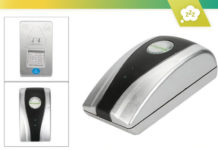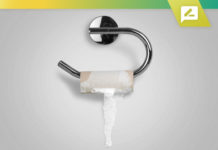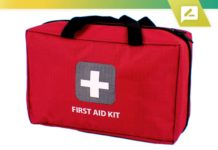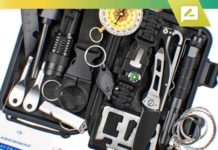Traveling can be an exciting and enriching experience, but if you have diabetes, it requires some extra planning and thoughtful preparation. Managing diabetes while on the move shouldn’t be a barrier to enjoying trips, whether they’re short getaways or extended vacations. With the right approach, you can travel safely and confidently. This article delves into all the essential tips and strategies to help you manage your diabetes effectively while traveling, ensuring you remain in control of your health and make the most out of your adventures.
Planning Ahead: The Foundation of a Stress-Free Journey
The key to a successful trip when you have diabetes is preparation. Before setting off, invest time in planning every aspect of your travel. This proactive approach not only minimizes potential issues but also gives you peace of mind.
Consult Your Healthcare Team
Engaging with your healthcare team is crucial. Discuss your travel plans with them well in advance. They can provide tailored advice on managing your condition, adjusting medications, and what to do in case of emergencies. If you’re going on a long-haul flight that involves crossing time zones, they can guide you on how to adjust your insulin doses accordingly.
Secure Ample Medical Supplies
Ensure you have an adequate supply of insulin or other diabetes medications. Pack at least two to three times the amount you usually need, to cover any unexpected delays or loss of medication. Remember to carry these in your hand luggage, as the cargo hold’s cold temperature can damage insulin. Diabetes UK advises keeping all medical supplies, including sensors and device spares, in your hand luggage to prevent damage and loss.
Documentation is Key
A doctor’s letter stating that you have diabetes and need to carry medical supplies is crucial. This letter can ease your passage through airport security and be invaluable in an emergency. Additionally, carrying a copy of your prescriptions can facilitate obtaining replacements if necessary.
Understand Airline and Destination Country Policies
Different airlines have various policies regarding medical equipment and medications. Check these details on your airline’s website, and complete any necessary forms in advance if you use an insulin pump or continuous glucose monitor (CGM). Similarly, research the health services and diabetes resources available at your travel destination.
Packing Smart: What to Include in Your Hand Luggage
Packing strategically is vital for diabetes management while traveling. Here are some essentials to consider:
Medical Supplies and Devices
Keep all your insulin, other medications, and device spares in your hand luggage. Carry them in their original packaging for easy identification at security checks. It’s also a good idea to have a Medical Device Awareness Card from the Civil Aviation Authority if you use a CGM or insulin pump.
Snacks and Glucose Sources
Pack rapid-acting glucose sources such as glucose tablets, dried fruit, or gummy bears, to treat potential hypoglycemia. High-fat options like chocolate are slower to act and are not ideal for quick fixes. Additionally, carry snacks like nuts, protein bars, and string cheese to help stabilize blood sugar levels during travel. One Drop suggests having a variety of snacks on hand to avoid relying on airport food, which may be scarce or delayed.
Navigating Airports and Flights
Airports and flights can pose unique challenges for people with diabetes. Preparation and awareness are critical to overcoming these hurdles.
Managing Security Checks
Airport security can be time-consuming, especially with medical devices and supplies. Inform security personnel that you have diabetes and require medical equipment. A doctor’s letter and labeled carry-on bags can expedite the process. Should your supplies need hand inspection, request this calmly and use it as an opportunity to educate the officers about diabetes.
Adjusting to Time Zones
Crossing time zones requires careful planning for insulin users. Eastward travel shortens the day and may necessitate reduced insulin doses, while westward travel lengthens the day and might require increased doses. Keeping your watch and insulin pump on “home” time until you arrive at your destination can help maintain consistency. Once you reach, adjust your devices and medication schedule to local time to ensure proper insulin delivery.
In-Flight Considerations
Cabin pressure can affect insulin vials, so inject half as much air into the vial as you normally would. Stay hydrated during the flight to prevent blood sugar spikes, and use any opportunity to move around the cabin to mitigate sedentary periods which can impact glucose levels. Waltzing the Dragon advises frequent movement to manage blood sugar effectively.
Managing Diabetes in Different Climates
Whether your destination is a tropical paradise or a snowy retreat, the climate can affect your diabetes management.
Hot Climates
Heat can degrade insulin, altering its effectiveness. When traveling to hot destinations, use cool bags or storage containers to keep insulin at a safe temperature. Store insulin in a hotel fridge if available, ensuring it does not freeze. Insulin affected by heat may change color or become cloudy, and should not be used.
Cold Climates
Extreme cold can freeze insulin, rendering it unusable. Keep insulin at room temperature, possibly in an inside pocket close to your body to prevent freezing. Diabetes UK provides detailed tips on managing insulin in both hot and cold environments, ensuring it remains effective throughout your travels.
Staying Active and Managing Blood Sugar
Physical activity is crucial for managing diabetes, and travel days often involve long periods of inactivity. Combat this by staying active whenever possible.
Exercise During Layovers and Flights
Utilize layovers to walk around the airport, and during the flight, take short walks along the aisle whenever possible. Simple exercises like marching in place or squats can also help keep your blood sugar in check.
Monitoring Blood Glucose
Travel disruptions can impact your regular routine, so monitor your blood glucose levels more frequently. Be prepared to adjust your insulin doses as necessary, with guidance from your healthcare team. If using an insulin pump or CGM, ensure the devices are set to the correct local time to maintain accurate insulin delivery and glucose monitoring.
Ensuring Adequate Insurance and Emergency Preparedness
Travel insurance that covers pre-existing conditions like diabetes is essential. This coverage provides peace of mind in case of medical emergencies related to diabetes or other health issues. Check that your insurance includes coverage for COVID-19 treatment, as this is still a relevant concern.
Emergency Contacts and Resources
Before traveling, identify the location of emergency clinics and the nearest consulate or embassy at your destination. Wearing an ID bracelet with your diabetes information can also be lifesaving in emergencies. Familiarize yourself with local health services and how to access insulin or other diabetes medications if required.
Staying Informed
Stay updated on health guidelines for your destination by checking resources like the Foreign travel advice page on the gov.uk website. Being informed ensures you can navigate health services effectively and receive the assistance you need promptly.
Conclusion
Traveling with diabetes requires meticulous planning and proactive management, but it should not deter you from exploring new places and enjoying your journey. By consulting your healthcare team, securing ample medical supplies, packing strategically, staying active, and monitoring your blood glucose levels carefully, you can manage your diabetes effectively while traveling. Utilize resources like Diabetes UK, One Drop, and Waltzing the Dragon for further guidance and support. With these strategies in place, you can embark on your travel adventures with confidence and ease, ensuring that diabetes management is seamlessly integrated into your itinerary.













![Bowflex Max Total: 2024 Fitness Workout Exercise Machine [Review] Bowflex Max Total: 2020 Equipment Review For Complete Upper and Lower Body Workout](https://www.advancedliving.com/wp-content/uploads/2019/12/Bowflex-Max-Total-218x150.jpg)


